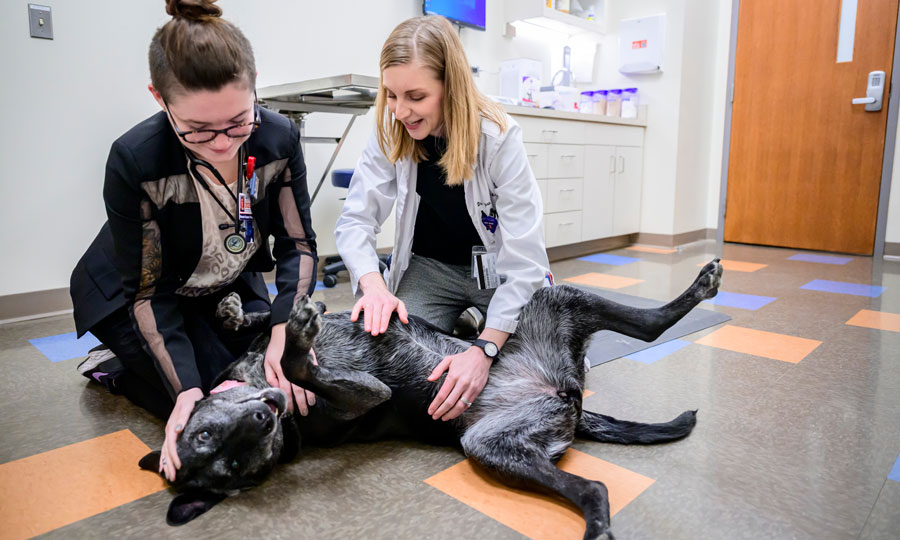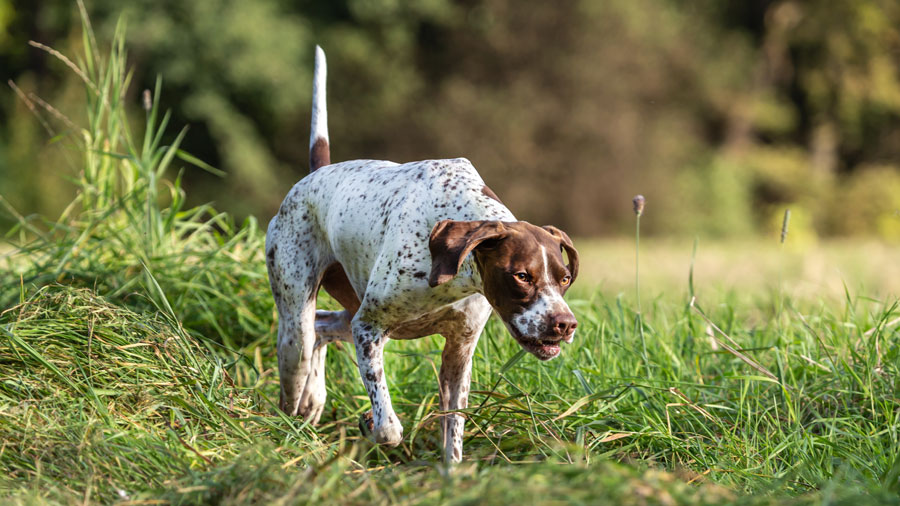February is National Pet Dental Health Month
“Periodontal disease is the most common disease in dogs and cats over 3 years old,” says Dr. Mallory Kanwal, a veterinarian who is pursuing specialization in dentistry at the University of Illinois Veterinary Teaching Hospital in Urbana.
Periodontal disease begins in pets just as it does in people: as inflammation of the gums that can be avoided with regular toothbrushing. “Unfortunately, dogs and cats aren’t brushing their teeth themselves, and that is where we come in. Brushing is the best way to support our pets’ oral health” says Dr. Kanwal.
Toothbrushing Basics
Dr. Kanwal recommends, “Brushing daily or every other day has been shown to significantly reduce the buildup that leads to inflamed gums.”
The first step is choosing a pet friendly toothpaste. “Human toothpaste is not safe for pets. It may contain fluoride and xylitol, which are toxic to animals.”
If your pet doesn’t like any of the commercial toothpaste varieties, Dr. Kanwal suggests using non-toothpastes, such as watered-down peanut butter or cream cheese. “The goal of toothpaste is to make toothbrushing enjoyable, so choose based on what your pet enjoys.”
Make Brushing Fun
Adding new routines to a pet’s schedule is sometimes difficult. “Starting slowly and making sure it is a positive experience is key. Start with them licking the toothpaste off the brush and slowly build to a few strokes of the toothbrush,” Dr. Kanwal says.
Pets can sometimes be very excited and move around during toothbrushing. To effectively brush a pet’s teeth, the owners should focus on brushing the outside of the teeth. Dogs and cats have very low cavity risk due to differences in tooth shape and the bacteria that live in the mouth.
Starting daily tooth brushing at a young age is ideal, but older pets can learn to enjoy it. Going slowly and using positive reinforcement is key, as is consulting with your veterinarian.
Work with Your Veterinarian
Always consult your veterinarian before starting your pet on a new routine. Your veterinarian can assess your older pet’s gum health before you begin brushing. If your pet’s gums are already painful, toothbrushing will not be a positive experience.
Tartar buildup on teeth is common. Although brushing can slow additional buildup and progression of gum disease, only a dental cleaning under anesthesia can remove tartar from your pet’s teeth.
Pets still need regular dental checkups with a veterinarian even when you brush their teeth routinely.
“Toothbrushing will never replace anesthetic oral exams with dental radiographs, similar to how people still need to go to the dentist twice a year,” says Dr. Kanwal. “Dogs that are more prone to periodontal disease, such as small dogs or those with tooth crowding, benefit the most from toothbrushing. However, large dogs still benefit from toothbrushing to improve breath and avoid periodontal disease.”
Treats and Supplements
Brushing teeth helps to improve overall pet health, and the training can be reinforced with a dental treat. Dr. Kanwal recommends choosing a treat that has been approved by the Veterinary Oral Health Council (VOHC), a group of veterinary dentists and scientists. VOHC reviews scientific literature on chews, diets, treats, water additives, and other products to evaluate whether those products meet pre-set standards of plaque and calculus reductions.
“The VOHC guides what I buy for my own dog,” she says.
Lastly, some pets do not like taking treats, so water additives are an option for picky eaters. “Water additives won’t be as effective as toothbrushing or a dental diet, but it can help some animals,” says Dr. Kanwal.
“Always have a bowl of water available without any additive so your pet can choose. VOHC-approved dental wipes also help to remove plaque.”
Dr. Kanwal says that toothbrushing is the gold standard of at-home dental care for pets. “It is the most effective way to disrupt the plaque buildup that leads to periodontal disease,” she says. “It can take time to train your pet to tolerate or enjoy brushing, but once they get the hang of it brushing becomes an enjoyable bonding time and your pet has better breath for giving kisses!”
By Crystal Munguia

![[a dog gets its teeth brushed]](https://vetmed.illinois.edu/wp-content/uploads/2021/04/pc-kanwal-brush.jpg)


